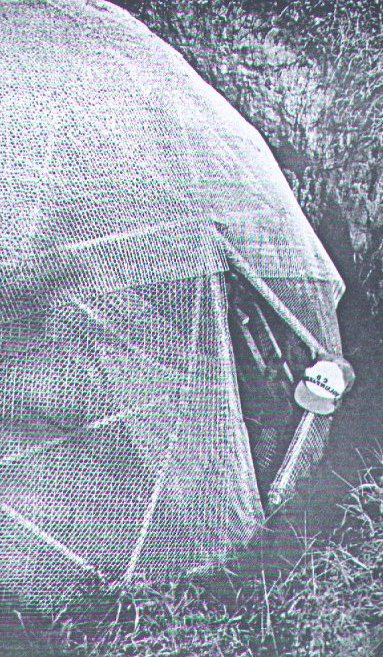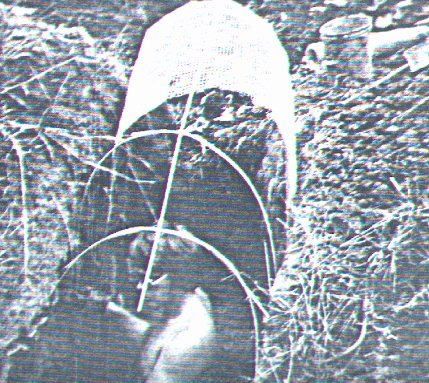
The same procedure being shown for this 13' diameter ferro-cement cellar can be used with the 24' diamter conduit truss to produce a larger ferro-cement structure. updated 7 Dec 98 rlc

This design is based on a conduit geodesic truss acting as a form upon which a multi-layered chicken wire covering is wired. This wire mesh then being plastered with a sand-cement mix. The dome shell will rest on a soft footing allowing the dome to settle which in turns allows the compacted clay overburden to act as an earth arch. To provide extra radiation and overblast protection, the arched entry must have a 90* turn and you must install a blast valve to keep your ear drums from rupturing during a nuclear blast.

This emergency exit hatch is located at the rear of the dome. It is to be used in case of the structure is used as a fallout shelter. The extra entryway lets the inhabitants set up a direct air flow through the shelter to prevent claustrophobic conditions.


The entryway should be curved so that the structure can have a secondary purpose of being a fallout shelter. By curving the entranceway, you can keep a designed 3' of earth between the inhabitants and the radiating fallout.

The dome is covered with straw to help the structure achieve it's ultimate load capacity, which is achieved due to the effect of earth arching.
Note: If I were building another shelter, I would simply use a rebar form achored in a narrow reinforced footing. It would require a temporary support, but it incorporates the form into the structure which increases its' strength. Also, it simplifies the construction and allows easier access to plastering the inside of the shell.